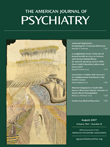We are hardwired to seek out attachment, and relational processes will always be an essential part of the human experience
(1) . Although DSM strives to apply the biopsychosocial model, there is a notable and strikingly absent consideration of the role of relational processes and disorders in the development, maintenance, and manifestations of mental disorders. The development of DSM-V offers an opportunity to correct this deficiency, and such a correction is warranted and vital.
Relational disorders have been defined as “persistent and painful patterns of feelings, behavior, and perceptions involving two or more partners in an important personal relationship” (
2, p. 161). The relevance of relational disorders to mental disorders hardly needs to be argued because research is clear that relational processes are important to the development, course, and outcome of mental disorders for both adults and children (e.g., references
3 –
7 ). Treatments of mental disorders that target family systems have been shown to have such efficacy (e.g., references
8 –
10 ) that the provision of training in couple and family therapy is now a desirable element for psychiatric residency accreditation. Finally, the majority of patients seen by psychiatrists are diagnosed as having problems with their primary support group
(11) .
A goal of DSM is to facilitate communication, yet it provides no language to discuss relational disorders. It has been noted that “relational disorders are commonly encountered in outpatient mental health practice. Yet the classification scheme offered by DSM-IV…is woefully inadequate in meeting the goals of facilitating communication among clinicians and researchers or in enhancing the clinical management of these conditions” (
2, p. 179). In fact, the work group commissioned by APA to evaluate gaps in DSM-IV concluded that one of the two most important such gaps was “the limited provision for the diagnosis of relational disorders” (
2, p. 123).
One of the arguments against the inclusion of relational disorders in the DSM system is that they do not fall within the diagnostic definition of “mental disorder” (discussed in reference 12). It is becoming increasingly clear that advances in brain science will eventually render the symptomatic approach to diagnosis embodied in DSM-IV obsolete and that the “intellectual straitjacket” of the current DSM system will have to be loosened (
13, p. 1680). Such loosening can open the way to fresh approaches that could include the description of relational disorders.
The ways in which relational diagnosis could be included throughout DSM-V have recently been reviewed by Beach and colleagues
(14) . For example, relational disorders are already included among the V-codes and could be improved by the development of criteria to increase their reliability and then included in the “official” portion of the nomenclature. Important relational processes, such as expressed emotion, could become part of the text describing associated features in existing conditions (e.g., schizophrenia)
(14) . These proposals would contribute greatly to the highest priority stated by the framers of DSM, which is for the document to be a helpful guide to clinical practice.

